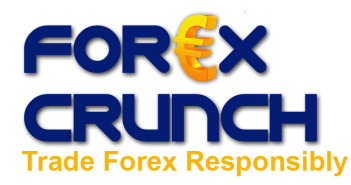One of the main issues on the agenda in Jackson Hole is the double dip recession – what are the odds? Here’s part of the debate, and the No. 1 reason to be pessimistic.
The National Bureau of Economic Research (NBER) is the official body responsible for determining cycles of growth and recession. On one hand, they see a low chance of this happening:
“There’s still a significant risk, maybe one chance in three, that there will be a double dip,” said Harvard University Professor Martin Feldstein, who sits on the Business Cycle Dating Committee of the National Bureau of Economic Research. Fellow panel member and Princeton University Professor Mark Watson said those odds are “way too high” and puts them instead at “one in 10 or maybe one in 20.”
But wait, they never determined that the recession that began at the end of 2007 ever ended. Mish notes this important point, and explains why he sees contraction in the 3rd and 4th quarters:
Of course, as I have pointed out a number of times, that could make sense if the 2007 recession was still not over. However, that is not what the NBER is suggesting above.
If we want to discuss odds, I believe there is about a 65% chance 3rd quarter GDP is negative! Will the 4th quarter be any better? Why? Stimulus will have run its full course by then. Note that stimulus was supposed to peak in the 2nd or 3rd quarter, yet 2nd quarter GDP came in at a “red hot” 1.6%.
Mish takes into account that stimulus will be over, but in the same symposium in Jackson Hole, Bernanke vowed to do everything he can to keep the recovery going.
To add to optimism, I found optimistic words from Jamie Coleman, that in September 1992, Time Magazine wrote about how the US economy is in a sorry situation, the longest since the Great Depression. Sounds familiar? In his post titled “It’s Always Darkest Before The Dawn” he goes on to remind us that:
Two months later, the NBER would announce the recession had ended 19-months earlier.
So, are the highly regarded economists at NBER just too slow, and all we need is patience? Perhaps. But there’s one huge issue.
Unemployment Never Improved During the Recovery
Unfortunately, being optimistic is a difficult task. It’s not only because “Dr. Doom”, Nouriel Roubini, raised the odds of a double dip recession to 40%. It’s the employment.
The official unemployment rate is still high, 9.5%. Yes, there’s a delay between economic recovery until employment picks up. It’s usually a 6 month gap. With a year into recovery (the US economy returned to growth in Q3 of 2009), the situation isn’t improving.
Weekly unemployment claims and Non-Farm Payrolls are weak, time after time. The official unemployment rate, marked U-3, shows the “Total unemployed, as a percent of the civilian labor force”. But there’s an alternative figure – U-6.
U-6 counts the “Total unemployed, plus all persons marginally attached to the labor force, plus total employed part time for economic reasons, as a percent of the civilian labor force plus all persons marginally attached to the labor force” – meaning it also counts discouraged workers who are too desperate to look for a job.
The seasonally adjusted figure, by the US Bureau of Labor Statistics (BLS), shows that the real unemployment rate rose from 16.4% in July 2009 to 16.5% in July 2010. So, during all the recovery period, the real unemployment rate remained high and refused to improve.
Without an improvement in employment during the “good times”, it’s hard to believe that good times are ahead. Jobs mean consumption – consumption that the US economy is dependent on.
What do you think?
Want to see what other traders are doing in real accounts? Check out Currensee. It’s free..
